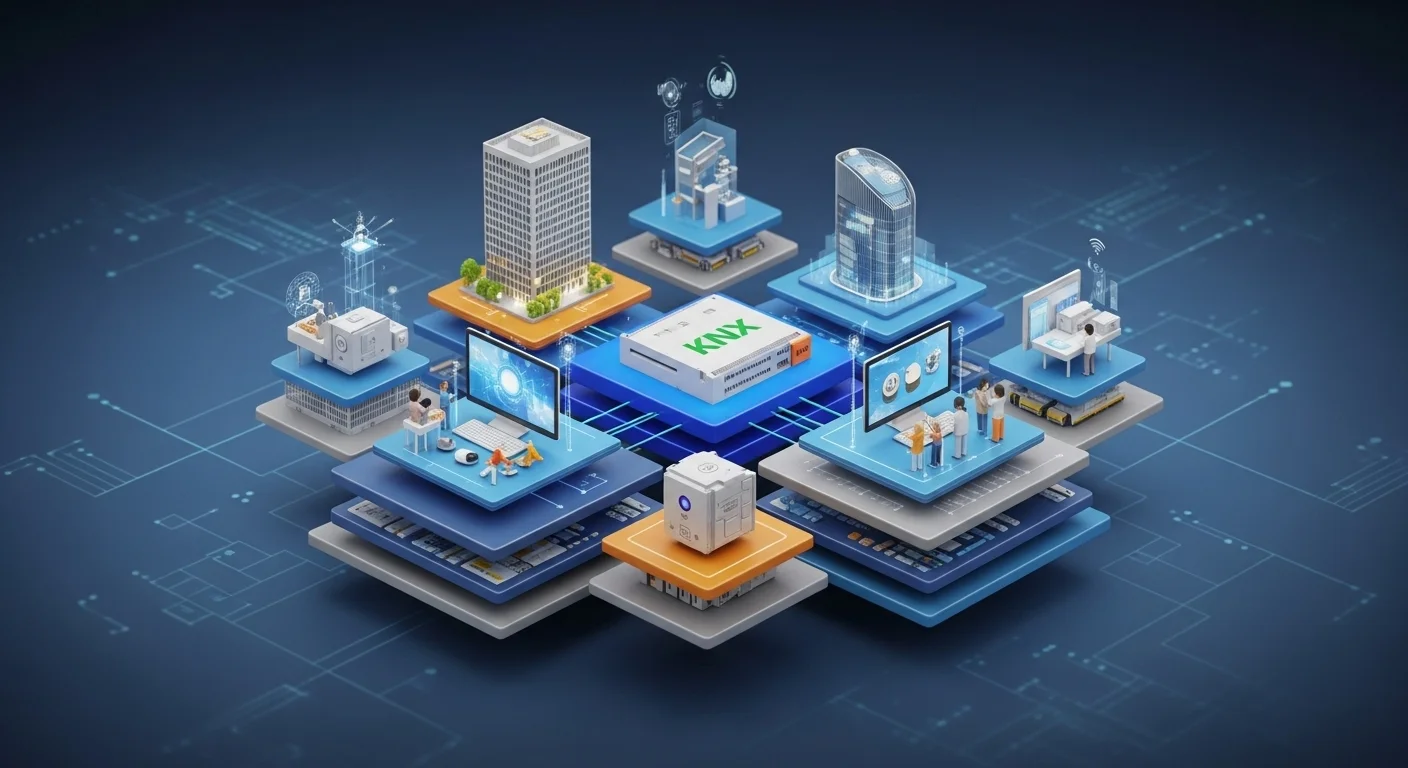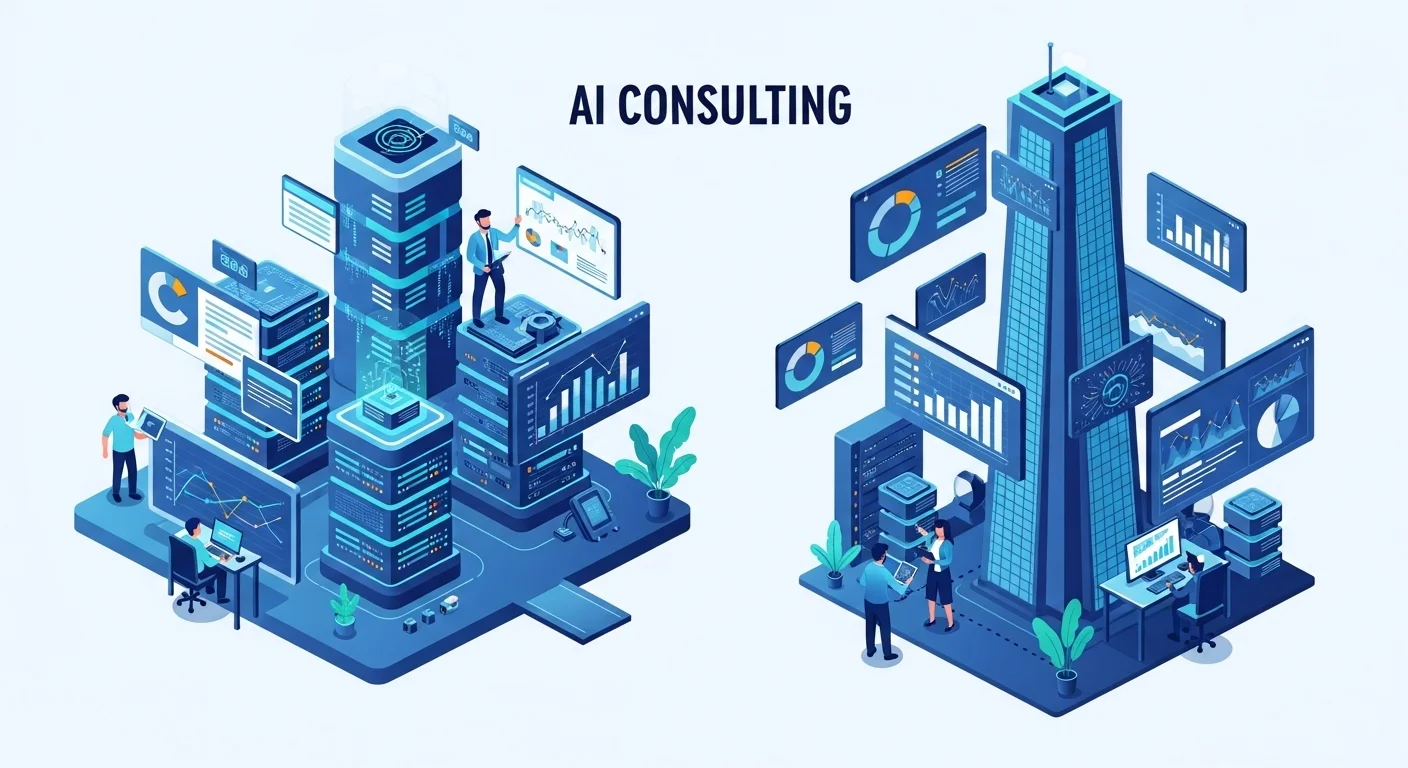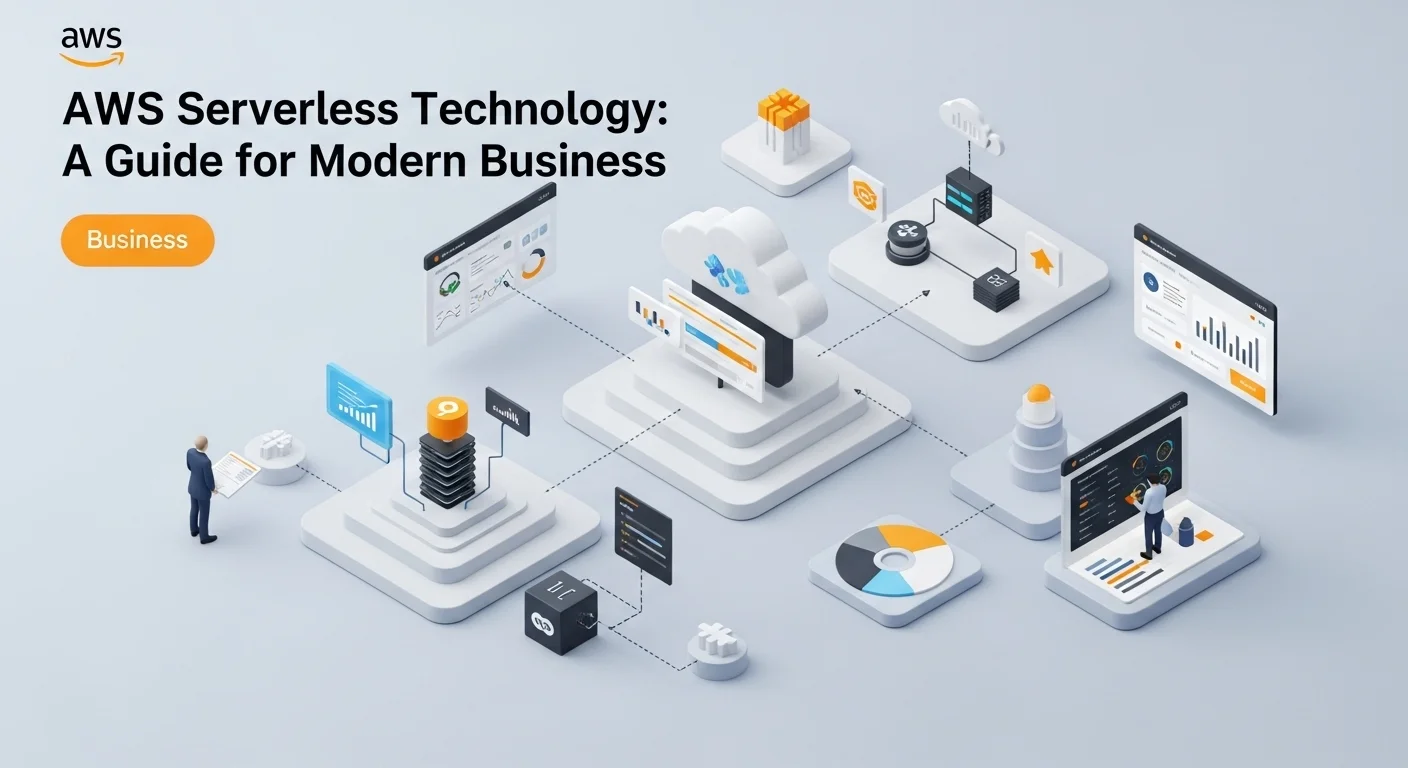What is a Virtual Desktop? A Real-World Guide for 2025
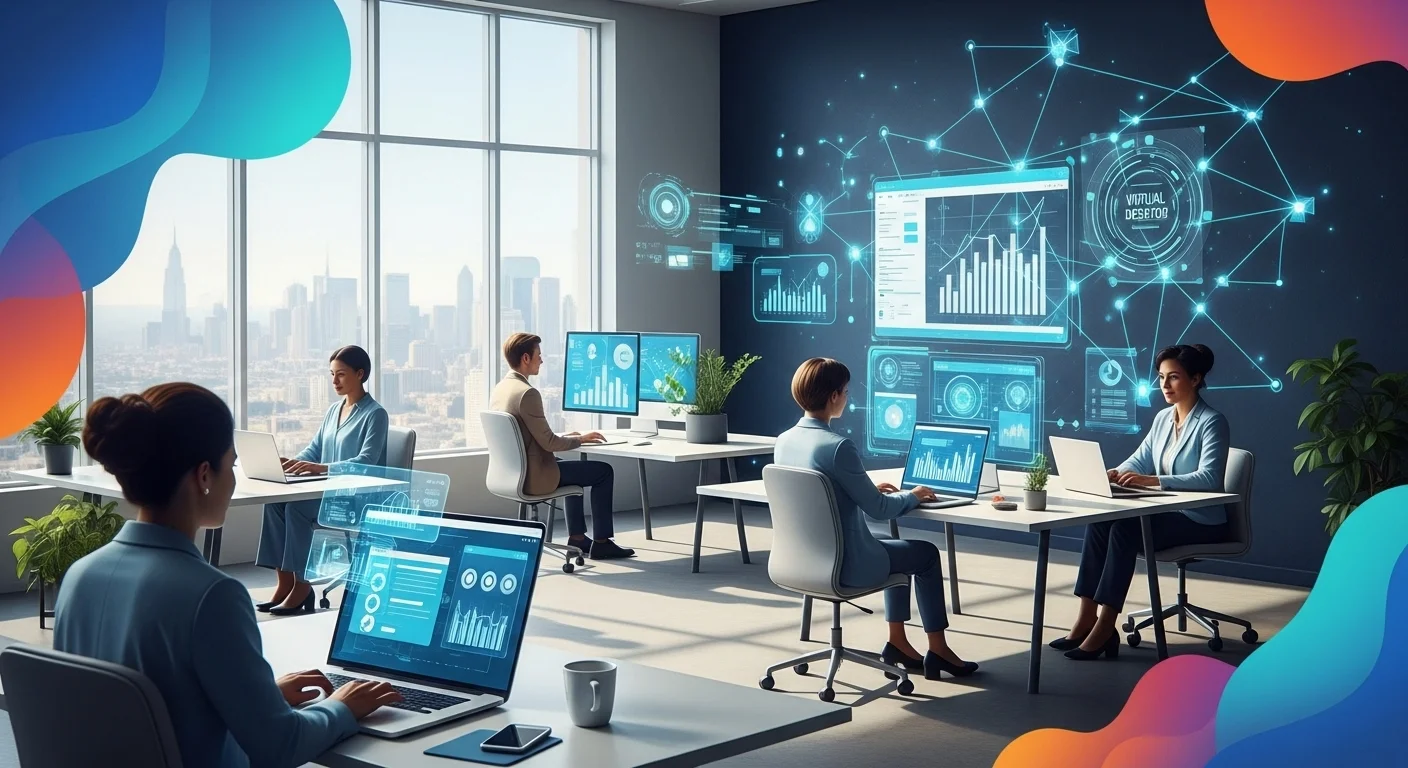
Executive Summary
In my years as a cloud architect, I've seen technologies come and go, but Virtual Desktop Infrastructure (VDI) has truly changed the game for modern businesses. It's the key to unlocking secure remote work, simplifying IT management, and making your company more agile. This guide is my personal walkthrough of everything you need to know. We'll start with the basics—what VDI actually is—and then dive into the practical side: comparing top cloud solutions from Microsoft and Google, and figuring out which one fits your team's needs. I'll share my experience on how moving your desktop infrastructure to the cloud can protect your data and give your team the freedom to work from anywhere. Think of this as the foundational knowledge you need to build a more flexible, secure, and future-proof IT strategy.
Table of Contents
Table of Contents
- What is a Virtual Desktop, Really?
- Why Virtual Desktops Are a Game-Changer for Your Business
- On-Premises vs. Cloud: Choosing Your Path
What is a Virtual Desktop, Really?
Let's cut through the jargon. A Virtual Desktop, powered by what we in the industry call Virtual Desktop Infrastructure (VDI), is like having your work computer stored safely in a central hub instead of on your physical laptop. Imagine your operating system, all your apps, and your files living on a powerful, secure server, either in your own data center or in the cloud. You then access this personal desktop from any device—your laptop at home, a tablet on the go, even your phone—with just an internet connection. I've helped countless companies make this switch, and the 'aha' moment is always when they realize the physical device in their hands is just a window to their real workspace. This separation is made possible by virtualization, which creates a software-based version of a computer, called a virtual machine (VM). It's this simple concept that has become absolutely essential for any business serious about remote work and security.
The Journey and Core Ideas Behind Virtual Desktops
The idea isn't brand new; it has roots in old mainframe systems. But today's VDI is a different beast entirely, thanks to lightning-fast networks and powerful servers. A typical setup has a few key players: a 'hypervisor' (the software that runs the VMs), a 'connection broker' (the traffic cop that connects you to your desktop), and a management console where your IT team can oversee everything. We generally talk about two flavors of virtual desktops: persistent and non-persistent. A persistent desktop is like your personal PC; it remembers all your settings and files every time you log in. It's tailored to you. A non-persistent desktop, however, resets to a clean slate after each use. I've found these are perfect for roles with repetitive tasks, like in a call center or a training lab, because they're incredibly secure and easy to manage.
Why Virtual Desktops Are a Game-Changer for Your Business
I can't overstate how important this technology is today. It solves some of the biggest headaches modern companies face. Here’s how I've seen it make a real difference:
- Rock-Solid Security: This is the big one. With VDI, your data doesn't live on an employee's laptop, which could be lost or stolen. It's all centralized and protected in your data center or cloud. For IT teams, it's a dream. They can apply security updates and policies to everyone from one place, creating a much stronger defense.
- Work From Anywhere, Literally: VDI is the ultimate enabler for remote and hybrid work. I've seen it boost productivity and morale because employees can get their full, familiar desktop experience whether they're at home, in a coffee shop, or on the other side of the world. It helps you hire the best talent, no matter where they live.
- Simplified IT Management: Remember the days of IT staff running around to fix individual computers? VDI ends that. An admin can update a single master 'golden image,' and that update instantly rolls out to thousands of users. Onboarding a new hire goes from a day-long task to a matter of minutes.
- Smarter Spending: While there's an initial setup, VDI saves money in the long run. You can use less expensive 'thin client' devices or extend the life of older computers because all the heavy lifting happens on the server. A cloud-based virtual desktop (often called DaaS) turns this into a predictable monthly expense, which CFOs love.
- Securely Embrace 'Bring Your Own Device' (BYOD): Employees love using their own laptops. VDI makes this a safe reality. It creates a secure bubble for work on a personal device, keeping company data completely separate from personal files. It’s the best of both worlds.
On-Premises vs. Cloud: Choosing Your Path
You have two main paths for deployment. On-premises means you own and manage all the hardware and software in your own data center. This gives you total control but requires a big upfront investment and a skilled team. The other path, which has exploded in popularity, is running your virtual desktop infrastructure in the cloud. Here, a provider like Microsoft or Google handles the backend infrastructure. This model, known as Desktop-as-a-Service (DaaS), gives you incredible flexibility to scale up or down as needed. For many businesses I've worked with, a cloud-based desktop offers the perfect mix of power, security, and cost-efficiency to stay competitive.
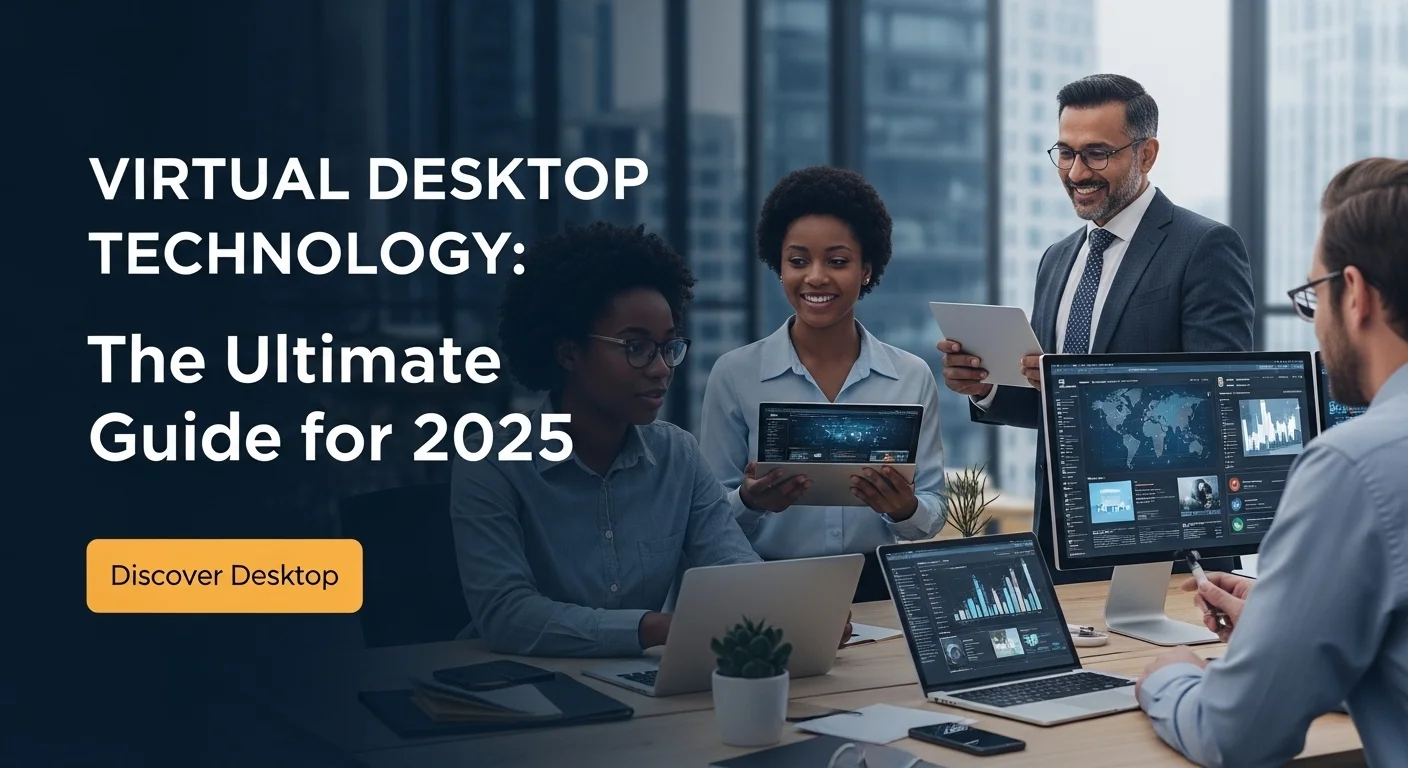
A Complete Guide to Virtual Desktop Solutions for Your Business
Knowing that VDI is powerful is one thing; actually picking and implementing the right solution is another. I've guided many businesses through this process, and it always comes down to understanding the technology, comparing the major players, and matching them to your specific needs. Let's get into the practical details to find the best virtual desktop for you.
A Closer Look at How VDI Works: The Architecture
A solid VDI setup is built on a strong foundation. Whether you keep it in-house or go to the cloud, the core parts are the same, but how you manage them changes everything.
The On-Premises Blueprint
In a traditional setup, you're the master of your own domain, managing all the hardware in your data center. The key pieces I always focus on are:
- The Hypervisor: This is the engine, like VMware vSphere or Microsoft Hyper-V, that creates and runs your virtual machines.
- The Connection Broker: Think of it as the maître d'. It greets users, checks who they are, and shows them to their virtual desktop.
- Provisioning Tools: These are the magic behind deploying hundreds of identical desktops quickly from a master image.
- Storage: Performance lives or dies here. Fast storage is non-negotiable for a good user experience. Slow storage is the number one complaint I hear.
- The Network: A fast, stable network is crucial. Any lag here will be felt immediately by your users.
This approach gives you ultimate control, but it's a big investment in both cash and expertise.
VDI in the Cloud (Desktop-as-a-Service)
This is where most of the industry is heading. A cloud provider hosts everything for you, and you pay a subscription fee. This model, DaaS, taps into the power of the cloud to deliver desktops with some serious advantages:
- Effortless Scaling: Need to add 100 new desktops for seasonal workers? In the cloud, it takes minutes, not weeks of ordering hardware.
- Predictable Costs: It moves your spending from a huge upfront capital expense (CapEx) to a manageable operational expense (OpEx).
- Global Reach: Providers have data centers all over the world. You can place desktops closer to your users for a faster, more responsive experience. I've used this to solve latency issues for international teams.
- Less Headaches: The provider handles all the backend maintenance, security, and updates. Your IT team can finally focus on more strategic projects.
The Big Players: Comparing VDI Providers
The market has a few heavyweights. In my experience, the best choice usually depends on what technology you're already using.
Microsoft Azure Virtual Desktop (AVD)
If your business runs on Microsoft, AVD is often the most seamless fit. It’s a cloud-native service on Azure. Its killer feature is a unique multi-session version of Windows, which lets multiple users share a single virtual machine. This is a huge cost-saver.
- Integration: It works flawlessly with Microsoft 365, OneDrive, and Teams.
- Security: It's backed by Azure's world-class security, including things like Multi-Factor Authentication (MFA).
- Access: Getting your team connected is simple. They can use a dedicated app or just a web browser to get to their full desktop or specific apps.
- Cost: For many, the licensing is already included in their existing Microsoft 365 subscriptions, making it incredibly affordable.
Google Cloud Virtual Desktops
Google Cloud offers fantastic VDI solutions, often by partnering with experts like Citrix. Their own offering, Google Cloud Workstations, is a powerhouse, especially for developers or designers who need serious computing power on demand.
- Performance: It runs on Google's private global network, which is one of the fastest and most reliable in the world.
- Flexibility: The Google Cloud ecosystem is very open, allowing you to build customized solutions with different technologies.
- Best For: I've seen it shine in high-performance fields like software engineering, 3D modeling, and big data analysis.
Citrix DaaS
Citrix has been in this game forever, and their platform is incredibly mature and feature-rich. A big advantage is its flexibility—you can run it on any major cloud or in a hybrid setup.
- User Experience: Their HDX protocol is famous for delivering a crisp, smooth experience, even on unreliable networks.
- Hybrid Cloud: It's great for companies that want to slowly move to the cloud, letting you manage on-premises and cloud desktops together.
VMware Horizon
Like Citrix, VMware is a virtualization giant. Horizon is their flagship VDI solution, available both on-premises and in the cloud.
- Ecosystem: If you're already a VMware shop, Horizon integrates perfectly with your existing tools, making it a natural extension of your data center.
- Display Protocol: Their Blast Extreme protocol is excellent and works especially well on mobile devices.
How to Choose the Right Virtual Desktop Solution
Finding the best fit comes down to a few key questions I always ask my clients:
- Who are your users? Are they performing simple tasks or are they power users who need high-end graphics and processing power?
- What's your current tech stack? Leaning into your existing ecosystem (like Microsoft or VMware) can save a lot of time and money.
- Will your apps work? Always test your critical business applications to make sure they run smoothly in the new environment.
- What are your security needs? If you're in a regulated industry like finance or healthcare, make sure the provider meets all your compliance requirements.
- Run a Pilot Test: I can't stress this enough. Before you go all-in, deploy a small-scale proof of concept with real users. Their feedback is the most valuable data you can get.
Choosing a virtual desktop solution is a major strategic move. By taking the time to understand the architecture and compare the providers, you can build a more secure, flexible, and productive future for your company.

Tips and Strategies to Master Your Virtual Desktop Experience
Putting a Virtual Desktop Infrastructure (VDI) in place is a journey, not just a simple tech swap. To really get the most out of it, you need a smart plan that covers technology, security, and your people. Over the years, I've learned a few things that separate a frustrating VDI project from a successful one. Here are my go-to tips and strategies.
Best Practices for a Smooth VDI Rollout
A rushed implementation is a recipe for disaster. From my experience, careful planning is everything.
- Start with a Pilot Program: Before you even think about a full rollout, test the waters. Identify your different user types—the finance team, the creatives, the call center agents—and run a proof of concept (PoC) with a few people from each group. This is your chance to find and fix problems early.
- Perfect Your 'Golden Image': This is the master template for all your virtual desktops. A clean, optimized image is critical. I always advise teams to strip out any unnecessary software or services. A lean image means faster desktops, less storage used, and happier users.
- Use the Right Desktop for the Job: Not everyone needs a dedicated, personalized (persistent) desktop. For task-oriented workers, use non-persistent desktops that reset after each session. They are cheaper, more secure, and easier to manage. Save the persistent desktops for those who genuinely need them, like developers or executives.
- Monitor Everything Proactively: Don't wait for users to complain. Use monitoring tools to keep an eye on login times, app performance, and network speed. This data helps you spot trouble before it starts and plan for future growth.
Must-Have Security Strategies for Your VDI
Centralizing your desktops is great for security, but it also makes your VDI a prime target. A layered defense is non-negotiable.
- Adopt a Zero-Trust Mindset: The guiding rule is 'never trust, always verify.' This means every user and device must prove they are who they say they are, every time. Multi-Factor Authentication (MFA) is the absolute baseline here.
- Use Conditional Access Policies: Get smart with your access rules. For example, you can block logins from unmanaged devices or require extra verification if someone tries to connect from an unfamiliar country. Microsoft's AVD has fantastic tools for this.
- Segment Your Network: Isolate your VDI environment. Even better, use micro-segmentation to create barriers between individual virtual desktops. If one machine is compromised, the damage is contained and can't spread.
- Secure the Endpoint Device: The device used to access the virtual desktop can still be a weak link. Make sure every connecting device, whether it's company-owned or personal, has basic security software and is up-to-date.
- Encrypt, Encrypt, Encrypt: Your data must be encrypted when it's traveling over the network and when it's stored in the cloud. All the top VDI providers make this easy to implement.
Optimizing Performance for a Great User Experience
At the end of the day, success is judged by your users. A slow desktop is a project failure.
- The Network is King: A stable, low-latency connection is the lifeblood of VDI. If you have a global team, use a cloud provider with data centers around the world to host desktops closer to your users. It makes a huge difference.
- Tune Your Display Protocol: VDI solutions use special protocols (like RDP or HDX) to stream the desktop to the user. You can adjust the settings on these protocols to save bandwidth for users on slower connections, for instance, by reducing video quality.
- Manage User Profiles Smartly: Bloated user profiles are a top cause of slow logins. I always recommend tools like FSLogix (now a key part of AVD) which separates the user profile from the operating system. It makes logging in dramatically faster, especially on non-persistent desktops.
The Future of VDI: Smarter, Faster, and AI-Driven
The next frontier for virtual desktops is Artificial Intelligence (AI). This is shifting VDI from a reactive to a proactive system. In the near future, AI will:
- Predict and Fix Problems: AI can analyze performance data to spot issues before they happen and automatically fix them.
- Optimize Resources: AI will intelligently manage your desktops, powering them up before the workday begins and shutting them down at night to save money.
- Boost Security: AI can spot unusual user behavior—like someone logging in at 3 AM from a new country—and instantly flag or block the activity.
- Personalize the Experience: Imagine a desktop that knows what you're working on and automatically pulls up the right files and apps. That's where we're headed.
By following these strategies, you can build a digital workspace that is not only powerful and secure but also a pleasure to use. A user-focused approach is the key to unlocking the true potential of this incredible technology.
Expert Reviews & Testimonials
Sarah Johnson, Business Owner ⭐⭐⭐⭐
As a small business owner, I found this really helpful. The breakdown of cloud vs. on-premises gave me a lot to think about. I wish there were a few more cost examples, but it's a great starting point.
Mike Chen, IT Consultant ⭐⭐⭐⭐
Solid overview of VDI. The author's personal experience comes through and makes the technical concepts easier to digest. The comparison of providers was particularly useful for a project I'm working on.
Emma Davis, Tech Expert ⭐⭐⭐⭐⭐
Fantastic article! As someone specializing in cloud solutions, I can say this guide is spot-on. It covers the crucial points from security to user experience without getting bogged down in jargon. Excellent resource.

